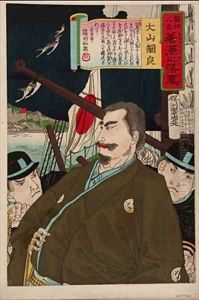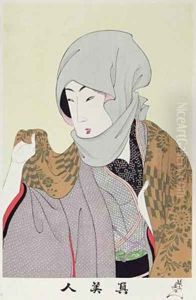Toyohara Chikanobu Paintings
Toyohara Chikanobu, born Hashimoto Naoyoshi, was a prominent and highly prolific Japanese woodblock print artist of the Ukiyo-e genre, active during the late Edo and Meiji periods. His work is notable for its vivid portrayal of women, historical events, and the rapid modernization of Japan. Chikanobu is especially renowned for his beautiful depictions of court life and female beauties, known as 'bijin-ga'. Chikanobu was born in Niigata Prefecture, and his early life was marked by the tumult of the final years of the Tokugawa shogunate. He initially trained in military arts but later moved to Edo (modern-day Tokyo) to pursue a career as an artist. He studied under various masters, including Utagawa Kuniyoshi, one of the last great masters of the Ukiyo-e tradition. Chikanobu's early works were influenced by his mentors, but he quickly developed his distinctive style, characterized by rich colors and intricate detail. During the Meiji period, Chikanobu embraced the changing times and began producing works that captured the essence of Japan's modernization and westernization. His series depicting scenes from the Meiji Emperor's life and other historical events became particularly popular, offering a visual chronicle of Japan's transition from a feudal society to a modern state. Despite the western influences, Chikanobu's prints retained a distinct Japanese aesthetic, blending traditional Ukiyo-e techniques with modern themes. Chikanobu's legacy is vast, with thousands of prints that continue to be celebrated for their historical value and artistic beauty. His work provides a unique window into a transformative period in Japanese history, capturing the tension between tradition and modernity. Chikanobu is remembered as a master of the Ukiyo-e genre, whose work transcended the boundaries of his time to document an era of profound change in Japan.











